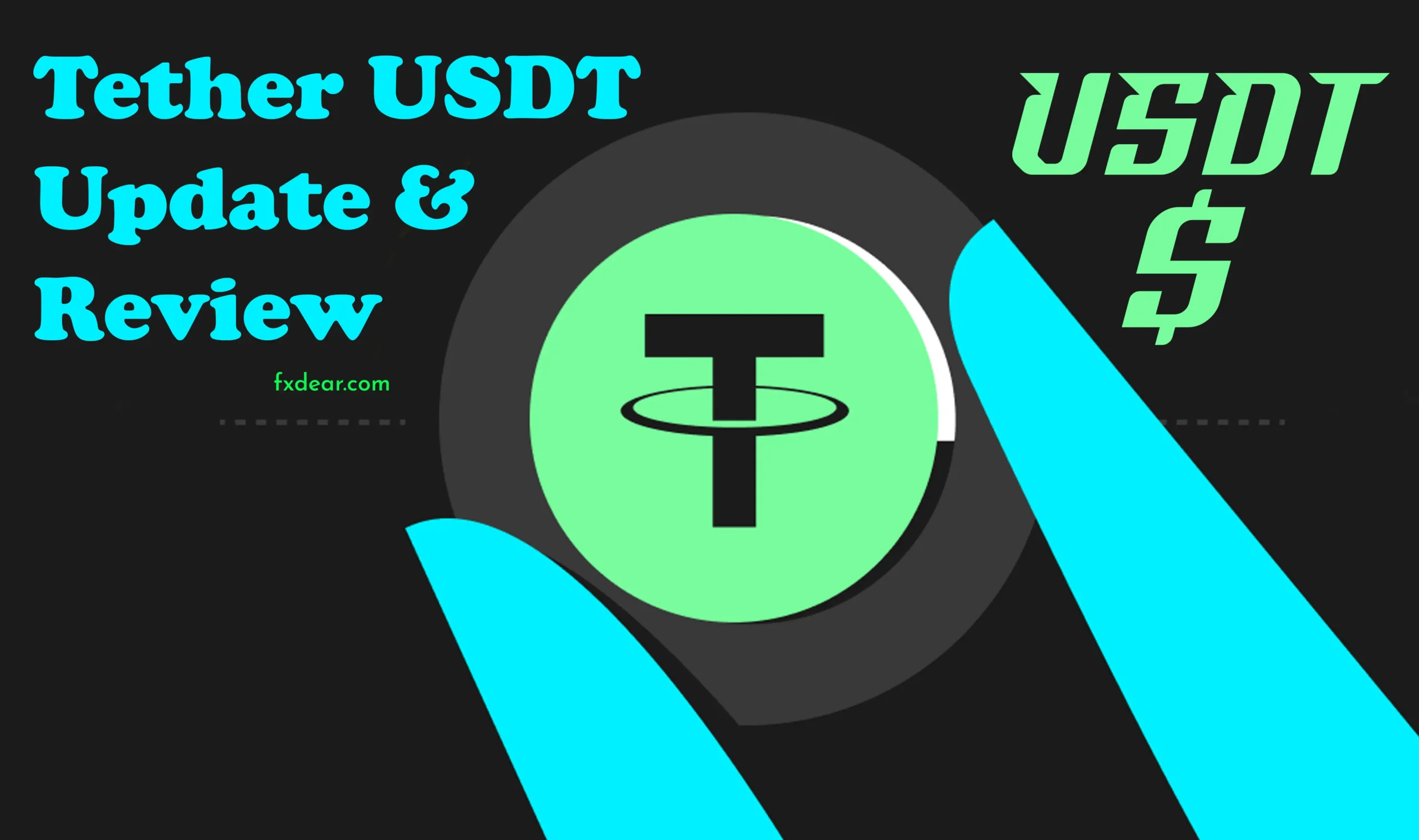Amidst the ever-evolving cryptocurrency landscape, USDT, or Tether USD, remains a cornerstone of stability, prized for its consistent value pegged to the U.S. dollar. Tether has seen remarkable growth recently, with its market cap surging past $83 billion. Such a robust presence underscores its critical role in providing liquidity and reducing volatility across crypto exchanges.
Originating in 2014, Tether was designed to bridge the gap between fiat currencies and blockchain assets, ensuring a stable exchange rate. More than just a simple stablecoin, it accounts for over 60% of all bitcoin trading volume worldwide. This update reaffirms its fundamental purpose: offering a stable, dollar-backed alternative in an inherently volatile market.
USDT Tether has shown significant growth recently, reaching a market cap of over $83 billion. Designed as a stablecoin pegged to the U.S. dollar, it remains crucial for providing liquidity and stability in the cryptocurrency market. Its widespread adoption underscores its importance in reducing trading volatility and enhancing liquidity.

The Evolution of Tether USDT
Tether, commonly known as USDT, was introduced in 2014. It was created to provide a stable coin pegged to the US dollar. This unique linkage aimed to reduce volatility often seen in other cryptocurrencies.
Throughout its early years, Tether’s adoption grew steadily, reflecting its significant value proposition. Traders quickly recognized the benefits of a cryptocurrency that maintained a consistent value. This stability became Tether’s defining feature, setting it apart from other digital assets.
Over time, Tether achieved several key milestones. For example, it was integrated into numerous crypto exchanges, enhancing its liquidity and usability. These steps solidified its position in the digital currency market.
Today, Tether stands as one of the most prominent stablecoins available. Its market cap has surged, surpassing many expectations. This growth highlights its fundamental role in the cryptocurrency ecosystem.
Inception and Key Milestones
The idea behind Tether was simple yet revolutionary. By pegging a digital token to traditional currency, it aimed to combine the benefits of both. The initial focus was on providing a reliable exchange medium without the typical volatility.
Tether’s early adoption was marked by significant integrations. Various exchanges began offering USDT pairs, increasing its liquidity. This enhanced usability encouraged more traders to adopt Tether in their transactions.
Key milestones include its inclusion in major trading platforms. This move broadened its reach and reliability. Each integration played a critical part in Tether’s journey to becoming a leading stablecoin.
Growth Trajectory and Market Impact
The steady growth of Tether can be attributed to several factors. One primary factor is its ability to provide stability in a volatile market. Traders often turn to USDT during uncertain times.
This demand has continually driven Tether’s market capitalization. Its value proposition ensures a consistent trading volume. As more users join the crypto space, Tether’s role becomes even more crucial.
Market impact is also seen in its dominance. USDT accounts for a significant portion of trading volumes worldwide. This makes it an essential asset for liquidity across numerous exchanges.
The Future of Tether USDT
Looking ahead, Tether is expected to maintain its essential role. Continuous market adoption and integration will likely drive its future growth. Innovations in the crypto space may further enhance its value.
Regulatory scrutiny is a consideration for Tether. Ensuring compliance and transparency will be pivotal. This will help maintain trust and stability for users globally.
As the cryptocurrency landscape evolves, Tether will adapt to new challenges. The core mission of providing stable, dollar-pegged digital currency remains. This foundational goal will guide its ongoing development.
USDT Tether’s Role in the Crypto Market
USDT Tether is crucial in the crypto market due to its stable nature. As a stablecoin, it is pegged to the U.S. dollar, maintaining a consistent value. This stability makes it a preferred choice for traders to avoid volatility.
Its popularity is seen in its high trading volumes across various exchanges. Traders use Tether to quickly move funds between exchanges, leveraging its liquidity. It’s also a common trading pair against other cryptocurrencies.
Tether provides a haven in times of market turbulence. When crypto prices drop, investors often move their assets into USDT to preserve value. This behavior underscores its role as a financial safety net.
Its integration into numerous platforms highlights its utility. With major exchanges listing USDT pairs, liquidity remains high. This widespread adoption ensures Tether’s continued prominence in the crypto ecosystem.
Stable Value in a Volatile Market
One of the main benefits of Tether is its ability to stay stable. As it’s pegged to the U.S. dollar, each USDT is always worth about one dollar. This makes it a reliable store of value in the unpredictable crypto market.
When there are sudden market drops, traders often convert their cryptocurrencies into USDT. This provides a safety net, protecting them from losses. The stability of Tether is a significant advantage in such situations.
Tether’s consistent value also allows for easier portfolio management. Traders can mitigate risks by keeping some funds in USDT. This strategy helps balance risks and provide liquidity when needed.
Liquidity Provider on Exchanges
Tether’s high liquidity makes it a favorite on many crypto exchanges. Its presence in numerous trading pairs facilitates quick transactions. This is essential for traders who need to move funds rapidly.
USDT enables seamless trading between different cryptocurrencies. Its widespread use encourages market efficiency and improves trading dynamics. This liquidity is a vital component of Tether’s market role.
Pairing with USDT is common on almost all major exchanges. This leads to substantial trading volumes daily, benefiting both traders and exchanges. The consistent trading volume also reinforces Tether’s critical position.
Safe Haven for Investors
During market downturns, Tether acts as a haven for investors. Converting crypto assets to USDT helps avoid potential losses. This behavior is common when abrupt market changes occur.
Investors rely on Tether’s stability to stay secure during unpredictable times. By holding USDT, they can wait for the market to stabilize. It’s a way to manage risks effectively while staying in the crypto ecosystem.
Tether’s reputation as a dependable asset in chaotic markets is well-earned. Its stability helps ease investor concerns and choices. This role adds a layer of security and reliability to the overall crypto market.
The Continued Growth of Tether USDT
Tether’s growth has been remarkable in recent years. Its market capitalization has soared, making it one of the largest cryptocurrencies. This surge in value reflects its widespread adoption and utility.
Many factors contribute to this growth. Increased demand for stablecoins amid market volatility is one. Additionally, expanding use cases outside traditional trading platforms drives Tether’s popularity.
USDT’s integration into various financial services is also significant. From decentralized finance (DeFi) to payment systems, Tether is finding new applications. Each integration enhances its market presence and user base.
The continued confidence of users and investors further fuels this growth. Tether’s ability to maintain stability plays a crucial role. This trust is evident in its high daily trading volumes and market cap.
The Benefits of Using Tether USDT
USDT Tether offers numerous advantages to crypto traders and investors. One of the main benefits is its stability, as it’s pegged to the U.S. dollar. This makes it a reliable store of value during market fluctuations.
Another key benefit is its liquidity. Tether is widely used across multiple exchanges, facilitating quick trades. This high liquidity ensures that trading can happen seamlessly and efficiently.
Additionally, USDT allows for risk management. By converting volatile assets into Tether, traders can protect their investments from sudden market downturns. This feature makes Tether a crucial tool for strategic financial planning.
USDT is also easy to use compared to traditional banking systems. Transactions are faster and often cost less, making it ideal for international transfers. This convenience attracts a wide range of users to Tether.
The integration of USDT into various financial services further enhances its benefits. From decentralized finance (DeFi) platforms to payment processors, its versatility is growing. Each new use case adds more value to holding and using Tether.
Lastly, regulatory acceptance of USDT is increasing. Many financial authorities now recognize its stability and utility. This acceptance fosters greater confidence among users, further boosting its adoption.
Considerations and Risks Associated with Tether USDT
Investing in USDT Tether involves understanding certain considerations and risks. One major concern is regulatory scrutiny. As governments and financial authorities become more interested in regulating cryptocurrencies, Tether is often in the spotlight.
Another consideration is transparency. Critics have frequently pointed out that Tether’s reserve audits are sometimes unclear. This leads to questions about whether Tether truly holds enough reserves to back its tokens.
USDT also faces competition from other stablecoins. Alternatives like USDC and DAI offer similar benefits. This competition could impact Tether’s market share over time.
Technical risks are also worth noting. Blockchains can experience bugs or attacks that may affect Tether transactions. Users need to be careful and stay updated on security practices.
Additionally, liquidity risks can emerge under extreme market conditions. If too many investors try to cash out at once, it could strain Tether’s reserves. This scenario could affect its ability to maintain its peg to the U.S. dollar.
Finally, investors should consider trust issues. While Tether has gained acceptance, some financial experts remain skeptical. Users must weigh all these factors before investing in or trading with USDT.
Frequently Asked Questions
The evolving world of USDT Tether brings many questions from those invested in the cryptocurrency market. Here are some frequently asked questions to provide clarity and help you stay informed.
1. How is Tether USDT different from other stablecoins?
USDT Tether stands out because it is directly pegged to the U.S. dollar, offering a 1:1 exchange rate. This means each USDT token represents one dollar, providing stability and reducing volatility.
Other stablecoins might be backed by different assets or use algorithms to maintain their value. However, Tether’s large market cap and widespread adoption make it a prominent choice among traders.
2. What are the primary uses of Tether USDT in trading?
One major use is to provide liquidity during trades, allowing for quick transactions without converting to fiat currency. This feature helps traders move funds between exchanges efficiently, saving time and transaction fees.
Additionally, traders use USDT as a safe haven during market volatility. When crypto prices drop, they can convert assets into Tether to preserve value.
3. Is Tether USDT subject to regulatory scrutiny?
Yes, like all major cryptocurrencies, Tether faces regulatory scrutiny from financial authorities worldwide. Concerns often focus on its transparency and whether it holds sufficient reserves to back its tokens fully.
Tether has made efforts to improve transparency through third-party audits and increased disclosures. Regulatory compliance remains an ongoing challenge as rules continue to evolve in the cryptocurrency space.
4. How does Tether maintain its 1:1 peg with the U.S. dollar?
Tether maintains its peg by holding reserves that match or exceed the amount of USDT in circulation. These reserves are often held in cash or other liquid assets.
This ensures that users can always redeem one USDT for one U.S. dollar, maintaining trust and stability within the market.
5. Can I earn interest by holding Tether USDT?
Yes, several platforms offer interest-bearing accounts for holding USDT Tether. These services lend your assets to others and pay you interest in return.
This can be a way to generate passive income while keeping your funds relatively secure in a stable asset like USDT.
USDT Tether continues to play a pivotal role in the cryptocurrency market. Its stability and liquidity make it an indispensable asset for traders. Whether for managing risk or facilitating quick trades, Tether’s functionality is unmatched.
As Tether evolves, its regulatory landscape and market dynamics will shape its future. Staying informed about these changes is crucial for leveraging USDT effectively. The cryptocurrency world remains volatile, but Tether provides a measure of security and reliability.
Visit my website for the latest information about forex brokers and the latest market updates and live updates.

